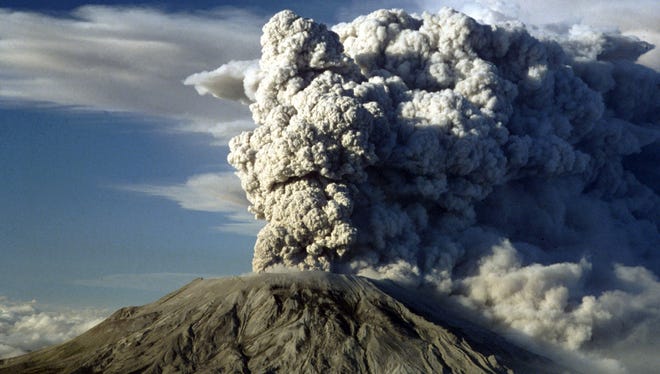Mount St. Helens: Facts about deadliest U.S. volcanic event 35 years later

Thirty five years ago, Mount St. Helens erupted in Washington, spewing ash, rock and hot gases into the air and causing mud to flow down the mountain sides.
The eruption took place on May 18, 1980, at 8:32 a.m. PDT and was "the deadliest and most economically destructive volcanic event in the history of the United States," according to the National Oceanic and Atmospheric Administration.
USA TODAY Network takes a look at the natural disaster by the numbers.
57 people died
Autopsies showed that most of the people killed in the eruption likely died from asphyxiation after inhaling hot ash, according to the USGS. Fifty-seven people died including photojournalist Reid Blackburn, a USGS volcanologists named David Johnston and Harry Truman, a lodge owner in his 80s who rose to fame after he refused to leave the mountain in the weeks preceding the eruption.
Two-month warning
The first sign that Mount St. Helens might erupt occurred on March 20, 1980, when a magnitude-4.2 earthquake caused snow avalanches to occur on parts of the volcano, according to the U.S. Geological Survey. Between then and May 18, there were more than 2,800 earthquakes recorded at the volcano, and a bulge began to develop on the volcano's left side, PBS reported.
1,314 feet shorter
A 5.1 earthquake on May 18 rattled the mountain, causing the bulge to burst and landslide down the mountain. Once the bulge was gone, the volcano's magma system was depressurized and blew off the top of the mountain, according to the USGS. The blast reduced the mountain's height by 1,314 feet.
900,000 tons
Washington state worked to remove about 900,000 tons of ash from highways and roads, according to the USGS. The International Trade Commission determined the total cost of damage and rebuilding efforts from the eruption came to an estimated $1.1 billion.
230 square miles of damage
The eruption damaged roughly 230 square miles of land around the volcano, according to the USDA Forest Service. It destroyed 158 miles of highway, 200 homes and 15 miles or railways, the USGS reported.
About 7,000 big game animals lost
In addition to human lives lost, an estimated 7,000 big game animals – such as deer, elk and bears – were also killed. Birds and small mammals also died.
The first animals to return to the eruption area were spiders and beetles. They were found at the site in late May of 1980, according to the USGS.
110,000 acres
In 1982, the federal government set aside 110,000 acres of land impacted by the eruption known as the National Volcanic Monument. The land within the monument is protected and was allowed to naturally rejuvenate and restore itself.
NASA tracked changes in the blast zone using satellite images from 1979 to 2013. The images show the land growing greener each year. The regrowth process continues to this day, according to NASA. Early satellite images display vegetation in red instead of green.
See photos submitted by King 5 reader Carmen R. Andrews
Carmen describes the scene: 'When I was 14 years old my classmates from Garfield High School and I went on a biology field trip to see the diatomaceous earth outside of Vantage, Wash. We actually heard the eruption as we were packing up to go home, but it wasn't loud enough to really register as something big at the time, and it was only later that we realized that we actually heard it when the volcano erupted."
Follow @lagrisham on Twitter